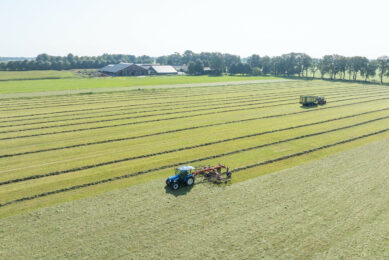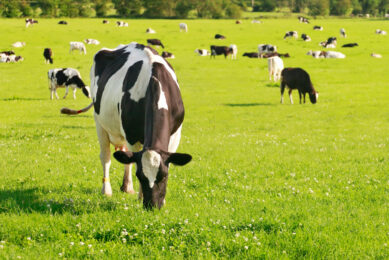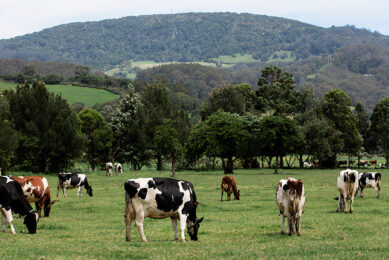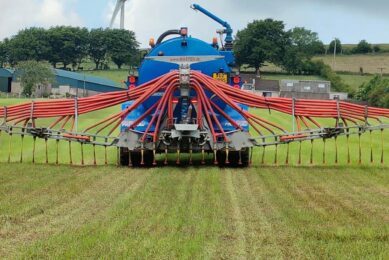Grazing dairy cows on temperate pastures
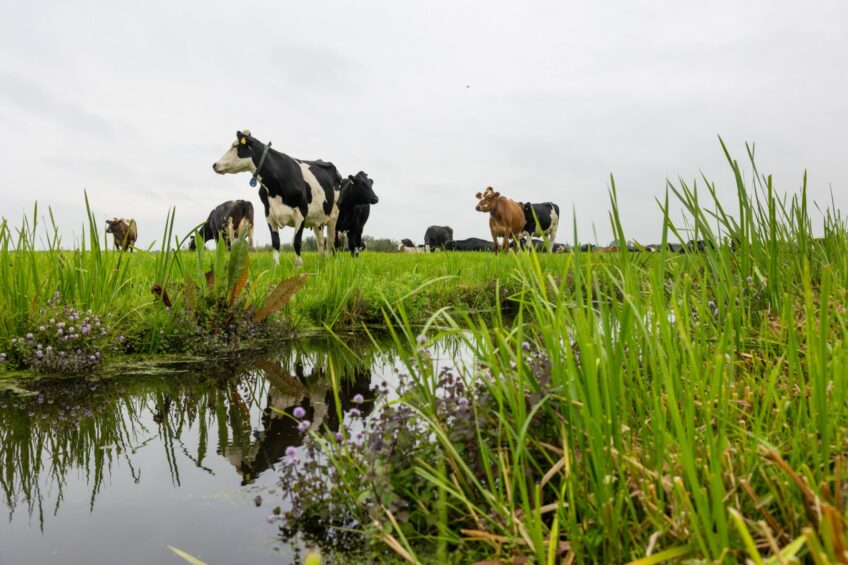
Dairy farmers around the world use pasture as a primary feed source, and grazing plays a central role in milk production. Here we take a look at some challenges for the grazing cow, along with opportunities for future improvement.
A major challenge in pasture management is maintaining a constant daily supply of dense herbage with relatively high dry matter and energy density during the grazing season despite variations in forage growth rate due to season, temperature, water and nutrient supply. Furthermore, other factors need to be considered – including live weight, milk yield, stage of lactation and changes in herd size – that affect feed intake and the land allocated to maintain target daily herbage allowance for the whole herd.
While increasing the amount of herbage offered per cow enhances feed and energy intake, as well as post-grazing herbage residual mass, the impact of herbage allowance on milk yield is more obvious at low herbage allowances because the extra energy intake reduces the maintenance requirement of dairy cattle. Therefore, to achieve optimal production, the effect of herbage mass and daily herbage allowance on milk production must be considered.
Efficacy of pasture utilisation
The efficiency of pasture utilisation is another challenge in pasture management. An increase in pre-grazing herbage dry matter causes an enhancement in the post-grazing dry matter residual at a greater rate than that of the herbage dry matter consumption, which results in a decline of the efficiency of pasture utilisation from over 80% to less than 20%.
Herbage mass evaluation
Daily herbage growth evaluation is required to provide high-quality grass to spring-calving cows to meet feed requirements and to improve performance. To evaluate the herbage mass, grass samples need to be cut in small frames across the field area to ground level or about 3-4 cm above ground level; however, this method is time-consuming and expensive with a high margin of error.
Appropriate feeding considering breed and genetic merit is essential to produce high yields. In the total mixed ration system, no choice among feeds is permitted – each bite is nutritionally balanced; diets are formulated for different cow categories; and dry matter and nutrient intakes are high. Therefore, total mixed ration systems support higher levels of milk production per cow compared to pasture-based systems.
Furthermore, higher production performance is accompanied by various challenges including early lactation ketosis, infertility, nitrate poisoning, hypomagnesaemia, diarrhoea, bloat and sub-acute rumen acidosis. In addition, increased calving interval due to poor herd fertility breaks the synchrony between pasture supply and demand, decreases herd milk production and reduces profitability.
Low efficiency of nitrogen use
Grazing cows urinate and defecate unevenly across the field, causing nitrate and phosphate leaching and nitrous oxide emissions. In addition, higher production performance is associated with higher levels of fertiliser application to grazed pastures, increasing the risk of nitrogen and phosphorus entering the soil and water sources. Therefore, it is essential to identify feasible strategies to increase efficiency of nitrogen use in grazing situations.
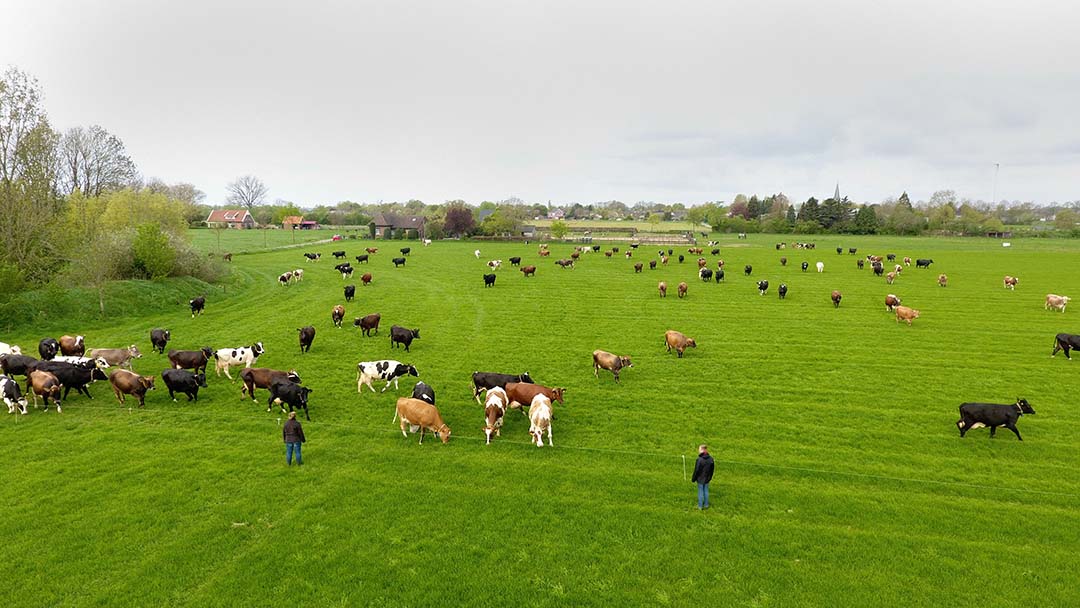
Opportunities for grazing on pasture
Predicting pasture growth
In a pasture-based system, it is essential to synchronise herbage supply with demand and to quantitatively assess forage growth using climate forecasts and current levels of soil moisture. Various systems – including a plate metre, cutting and weighing/visual assessment and ultrasonic scanning that can be towed behind an all-terrain vehicle – are used to estimate regular pasture herbage mass. In addition, the Moorepark St Gilles Grass Growth model is a user-friendly model with basic and simple input responding to different weather and mineral nitrogen fertilisation events. Automatic measurements of herbage mass using robotically controlled mini-tractors or electromagnetic reflectance at different wavelengths can predict forage characteristics.
Satellite imagery is also used to evaluate grassland herbage mass; however, cloud cover interferes with imaging, thus the information stream can be irregular. Synthetic Aperture Radar is another tool that is less weather dependent, but it can only measure herbage mass above 50 cm in height.
Improving grazing efficiency
Automatic techniques for monitoring grazing behaviour and pasture allocation using neck-mounted accelerometres can improve grazing efficiency. Frequent allocation of daily herbage allowance is beneficial to dry matter intake, pasture utilisation and milk yield in early lactation.
Frontal grazing is an automated system comprising 2 solar-powered wheeled robots for incremental allocation of new areas of pasture to be grazed, which increases the efficiency of pasture utilisation. In addition, dietary supplementation of lower crude protein than that of grazed herbage provides an opportunity to reduce total nitrogen intake and decrease urinary nitrogen excretion. Moreover, adding forbs to the pasture mixture reduces the crude protein content of herbage, thus increasing the efficiency of nitrogen use and improving milk yield.
Increasing dry matter intake
Low dry matter content in pasture limits dry matter intake; therefore, the selection of pasture species or varieties with higher dry matter or improved digestibility can increase dry matter intake. Increasing sward botanical complexity under grazing management has positive effects on animal performance. In addition, an increase in daily herbage allowance is associated with an increase in dry matter intake and milk yield, and a decrease in efficiency of utilisation of available forage. Furthermore, dietary supplementation of low-cost by-products is a feasible option to increase total dry matter intake.
Milk quality and quantity
Milk and milk products produced on pasture-based systems are considered as functional foods with health benefits beyond their nutritional value. Milk derived from pasture-based diets contains higher levels of natural antioxidants, proteins, lipids, vitamins and minerals. In addition, providing high-quality pasture throughout lactation and supplementing strategically with low-cost, high-energy feeds increase output per head at grazing.
Conclusion
Challenges for grazing on pasture include daily herbage supply, the efficacy of pasture utilisation, herbage mass evaluation, output per head and low efficiency of nitrogen use. However, grazing on pasture presents opportunities including predicting pasture growth, improving the efficiency of grazing and nitrogen use, increasing dry matter intake and enhancing milk quality and quantity. Further research is required regarding the perceived enhanced nutritional value of milk from grazed cows to improve the future sustainability of the dairy industry.



